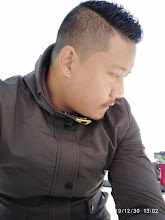KHUKURI
Khukuri represents four great virtues of
life i.e., Honour, Dignity, Courage, and Loyalty. It is a curved blade knife
used as a weapon or a tool which is originated from the Indian subcontinents. It
closely resembles the –Kopis, a Greek knife, and also ancient Japanese swords
which have some of the distinguished features of khukuri. The exact history and sources are still up for debate.
The oldest existing khukuri belonged to the Drabya shah (the king of Gorkha) in
1627 AD, kept in National Museum of Nepal, Kathmandu. The khukuri was known to
the western world from the war between the British in India and the Gorkha army
in western Nepal back in 1814-1816. After this, khukuri came to be amongst the
most popular unarmed combat weapon in
the world. Burton (1884) writes that a khukuri–like a falchion inscribed with
writing in pali was housed in the British Museum. Dracula, a novel by Irish author
Bram Stoker in 1897 also gave khukuri literary attention. It is the symbol of
prized possession of Gorkha soldiers who have fought various wars in different
terrain including historic World War I & World War II. Khukuri is the characteristic
weapon of Gorkha regiments in India and the different Gorkha army of the world. All
Gorkha armies are issued with two khukuri, one being ceremonial and the other for
exercise /combat. This weapon has the unique distinction of being the only
ancient battle weapon still in use in the field today which can be seen as absolutely unique in the entire history
of edged weaponry. The “Biswakarma” is the traditional inheritors who are well
known for making the world-famous ‘khukuri ‘, who has been forging this for
many generations. Khukuri are of three types –shirupatha, baspatha, and buduna (slightly heavy). Types of khukuri
are named after the shapes of leaves. The strength of khukuri can be seen on
the slashing edge and not in the weight of the khukuri. Well, skilled artisans
are needed to give the khukuri the right balance and edge. Two little knives are
featured with the khukuri one being ‘Karda’ and the other ‘chakmak’. Each one as
different aspects, to sharpen the khukuri and to cut small things karda is
present while chakmak is used to start a fire using stones and some fibers. The
scabbard of the khukuri or Dabh (a local name for the cover) is made of wood
and metal stripes it and also the leatherwork can be seen in scabbard sometimes. Meanwhile, the artisans do not include the karda and chakmak as
people tend to carry only the khukuri nowadays which leads to the absence
of a complete set. Kaudi (notch) at the
base of the blades of a khukuri signifies the powerful Hindu symbol “OM” and
also signifies cows' hoof. Kaudi is seen as a sighting device to capture the enemy’s
view to behead him and also to lock the sword of the enemy in it to disarm him. Amongst
the many reasons practically it is there to drop off the blood from the blade
without making the handle slippery. The handles of the khukuri are often made
of hardwood and butt plates are made of brass or steel. The khukuri is also
used as a multi-purpose tool like cutting woods for fire, cutting meats and vegetables,
other farm and household activities. It is used in traditional rites such as wedding,
Dasai, Bhai-Tika. Whereas in sacrificial rituals such as maar and Kul puja (offered
to ancestors) a khukuri must have a single clean shot otherwise it is believed
to bring misfortune.
Khukuri is one of the major things which you will find in
every house of the Gorkha community. To safeguard a family mentally and
religiously, the khukuri is believed to have a spiritual power to scare off
evils and also is kept under the pillow of the people facing sleeping disorder
.A khukuri which once belonged to a man is kept in his absence. One can buy it
as a souvenir, for their close ones or friends while traveling to the places
of the Nepalese people. To conclude khukuri can be seen as a guardian and a
boon to the Nepalese community.







No comments